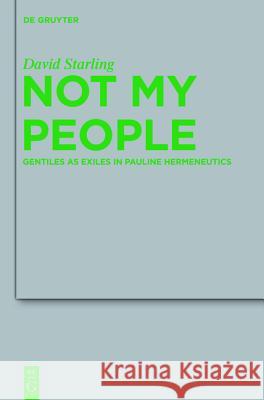Not My People: Gentiles as Exiles in Pauline Hermeneutics » książka
Not My People: Gentiles as Exiles in Pauline Hermeneutics
ISBN-13: 9783110259605 / Angielski / Twarda / 2011 / 266 str.
After a survey of recent approaches to the study of Paul's use of Scripture, the four main chapters explore the use of Isa. 54:1 in Gal. 4:27, the catena of scriptural texts in 2 Cor. 6:16-18, Hos. 1:10 and 2:23 in Rom. 9:25-26 and Isa. 57:19 in Eph. 2:17.
In each case, the ancienwriter seeks to place the letter in its historical context and rhetorical situation, identify the significance of any conflations or modifications that have taken place in the citation process, analyse the citation's function within its immediate context, compare its use by Paul with the various ways in which the text is interpreted and appropriated by other Second Temple writers, and evaluate the main proposals offered as explanations for the riddle posed by the citation. That done, he offers his own account of the hermeneutic at work, based on an analysis of the explicit and implicit hermeneutical pointers through which the letter guides its readers in their appropriation of Scripture.
This book compares the hermeneutical approaches of the four letters and draws conclusionsconcerning the interplay of continuity and discontinuity between Scripture and gospel in Paul's letters and the relationship between grace and Gentile inclusion in his theology.
On several occasions within the Pauline corpus, scriptural texts which seem to refer in their original contexts to the return of exiled or scattered Jews are appropriated as references to Gentile believers in Christ. This book is an investigation of four such instances (the use of Isa. 54:1 in Gal. 4:27, the catena of scriptural texts in 2 Cor. 6:16 18, Hos. 1:10 and 2:23 in Rom. 9:25 26 and Isa. 57:19 in Eph. 2:17). It offers insights into the exegesis of these particular verses and sheds light on several larger questions of Pauline hermeneutics and theology.











